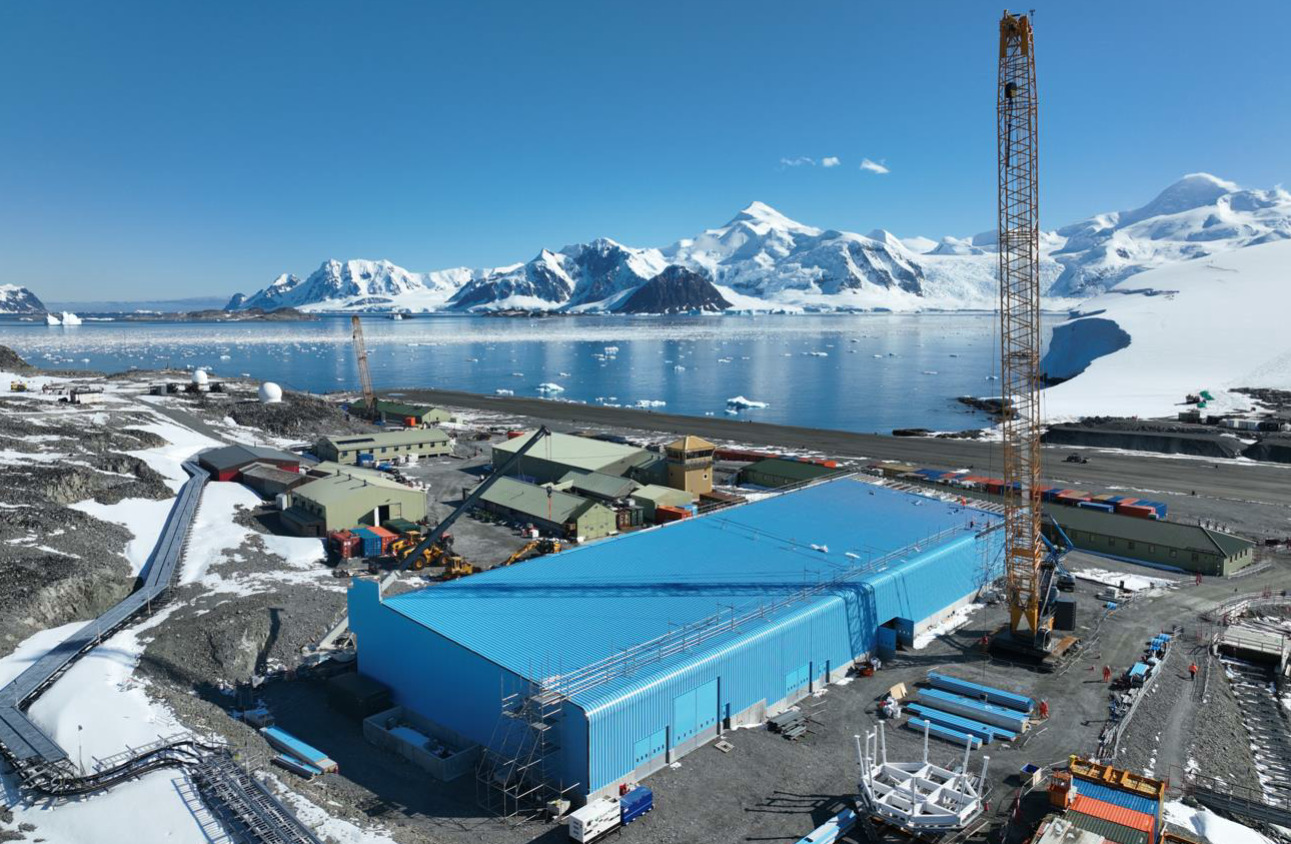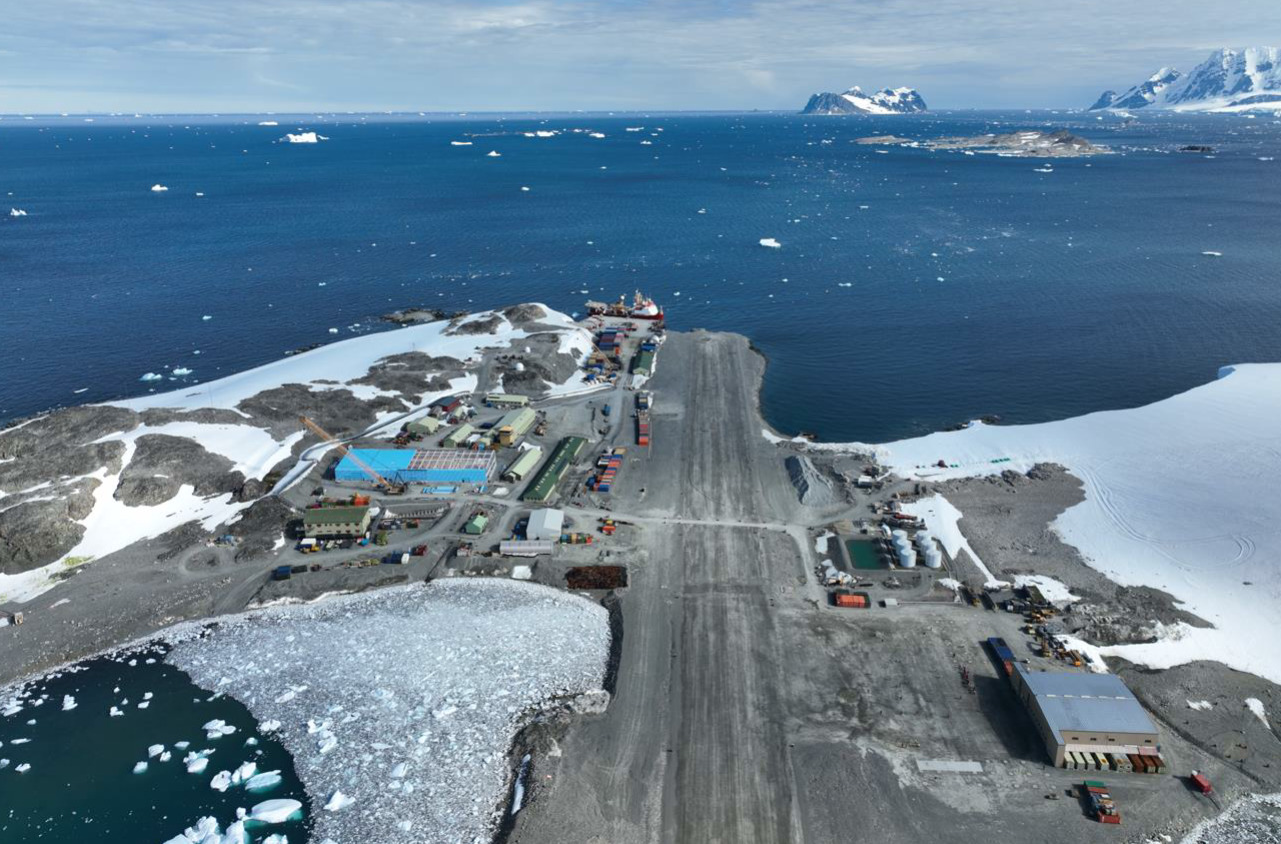
Ahead of his presentation at Digital Construction Week, Scott McLean of BAM reviews the role of information management in delivering the Antarctic Infrastructure Modernisation Programme (AIMP) for the British Antarctic Survey (BAS).
The AIMP is a long-term investment programme by the BAS that has already delivered a new polar research ship (RRS Sir David Attenborough), an upgrade of the wharves at Rothera Research Station and King Edward Point, and upgraded facilities at Bird Island in South Georgia. Future projects include upgrading the runway, transition to renewable technologies and to upgrade the hangar.
The AIMP is delivered by the Antarctic Infrastructure Modernisation partnership, which includes construction partner BAM and its team, design consultant Sweco, with Hugh Broughton Architects providing delivery design. Ramboll is acting as technical adviser to BAS, with architect NORR providing concept design and Turner & Townsend providing cost management. The framework is expected to continue into the 2030s.
There are many challenges with constructing in Antarctica. The primary risks are:
- the environmental standards surrounding the pristine environment;
- the location and the logistics of getting both people and equipment to site;
- ongoing science experiments; and
- the challenging weather.
Antarctica is an untouched wilderness that has a very delicate eco-system: as such all who travel there must ensure they do not bring non-native species to Antarctica with them.

“It is essential that the building and its systems are fully commissioned and tested before they are handed over to the end-user.”
In order to construct, BAM has construction seasons between November and May to make the most of the better weather. Equipment and materials are shipped by vessel from the UK. This creates another deadline for deciding and purchasing equipment and materials or they may just miss the boat.
Efficient information management
Efficient information management helps ensure that the project is delivered in a sustainable and environmentally responsible manner. The wharf achieved the first sustainability CEEQUAL award in Antarctica, for sustainable construction projects, and an Excellent rating by BREEAM.
The collaboration between task teams, driven by information management, ensures that a structured approach to managing environmental information, meeting environmental performance requirements, ensuring all materials meet the strict environmental requirements, and consistent environmental reporting from site is being met. This enables the project team to take a proactive approach to sustainability, ensuring that the project is delivered in an environmentally responsible way and is sustainable for the lifetime of the asset.
By planning information delivery, and working closely with the designer and supply chain, safety risks were reduced, if not eliminated. This came primarily from receiving drawings and engaging suppliers to prefabricate items where possible – more than 70% of the MEP for the new research facility, the Discovery Building, is prefabricated.
The construction models and collaboration between suppliers allowed for constructability sessions to take place between all parties, to understand the interfaces on the station and help create a robust construction programme for those undertaking the work at Rothera. This information being provided at the correct time allows for clear communication with BAS and the station-bound scientists to enable a construction programme that avoids excess interference with the science and air operations at Rothera.

Extreme weather
Extreme weather conditions in Rothera can have a significant impact on the construction process. With temperatures that can drop to -20 deg C or lower, and with the possibility of strong winds and blizzards, it is essential that all aspects of the construction process are carefully planned and managed.
Working collaboratively with all the task teams helps in the management and delivery of information related to health and safety, including risk assessments, method statements and safety plans. This allows time to review and ensure the correct procedures and equipment are in place, Any training requirements are also captured prior to departure to Rothera.
Finally, it is essential that the building and its systems are fully commissioned and tested before they are handed over. Working with both BAS, MEP specialist G&A Barnie and Sweco, the development of commissioning plans, the management of testing and validation, and the preparation of operation and maintenance manuals have been a great success. By working closely with the client and its FM team, the delivery team can ensure the completed projects are fully functional and operational. This helps to minimise the risk of issues and ensure a smooth transition at handover.
Understanding the Asset Information Requirements from BAS was, and is, the result of strong collaboration and knowledge sharing. By understanding BAS’s strategic and operational objectives, the information requirements for all projects could be distilled into clear and precise needs. Working closely with the FM and estates team, gaining an understanding of the CAFM system became easier. This also helped ensure that the data sets and information being produced by BAM and Sweco feed into the systems in use at BAS for operations and maintenance of their estate, regardless of the use case.
Clear communication
Digital systems need structured data that can be mapped/integrated between systems. This can be possible only through clear communications between the end user and the individuals who generate the information to be used. Laying this foundation is the critical responsibility of information management on frameworks such as BAS, where the client clearly has dedicated systems to operate and maintain their assets once in use.
In conclusion, BAM has used both PAS 1192 and ISO 19650 standards to enable successful delivery and handover of construction projects at Rothera. The key benefit of the information management guidance and strategy has been the collaboration between all the AIMP partners in ensuring that all information is being shared, in a useable format with the right people at the right time. The coming together to work as one delivery team – and not as individual companies – has yielded incredible benefits in the information management journey of construction in the Antarctic.
Scott McLean is BAM’s digital construction specialist on the AIMP. You can hear him talk, along with Sweco technical director and information manager Megha Nagendra-Wells, in more detail about information management’s role in the project at Digital Construction Week on 17 May.
For more on the project, read Global Construction Review’s report.
Don’t miss out on BIM and digital construction news: sign up to receive the BIMplus newsletter.













